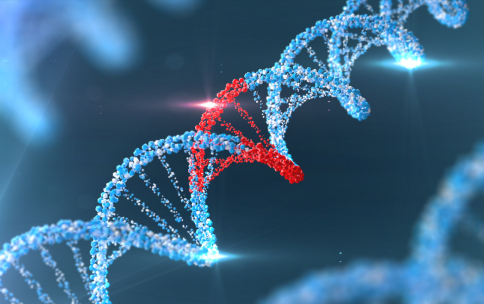
For a body to function, cells must remember their identity through many cell divisions. For example, when fresh skin cells routinely divide to replace old skin cells, they must remember that they are skin cells instead of liver, heart, or bone cells. Cells maintain this ‘memory’ of who they were in part through molecules that mark both DNA and the histone proteins that the DNA winds around. These molecular marks, or “epigenetic factors," persist through cell divisions and facilitate the activation of genes that control cellular identity. They do this by controlling how tightly DNA is wound around histone proteins, either allowing or limiting the access of proteins that turn on genes that make one cell type over another. The marking of histone proteins by epigenetic factors is central to a cell’s ability to remember its identity across cell divisions. Until now, it has been unclear how this process is controlled and how these marks are maintained through the hundreds of divisions cells can experience throughout a lifespan.
The Common Fund 4D Nucleome program aims to study how the 3D structure of the cell nucleus changes over time and controls cellular processes. A team led by 4D Nucleome researcher Dr. Leonid Mirny built a digital model of chromatin (DNA and the histone proteins it wraps around) to investigate the key elements required to stabilize epigenetic marks through multiple cell divisions. The team created a simulation of a 3D chromatin sphere that could predict what happens to epigenetic marks on histone proteins when a cell divides. The foundation of the model relies on the ‘stickiness’ between epigenetic marks on histone proteins that attract them to each other in close quarters. Marks can spread to nearby DNA histones, but because the marks are attracted together and bunch up, those tight 3D spatial constraints ensure that marks don’t spread too far along the chromatin and cellular epigenetic identity is maintained. This is analogous to how an infection becomes fixed or ‘endemic’ in a densely populated social network. Here, epigenetic mark patterns that define a particular cell type may become ‘memorized’.
The researchers found that marks could be maintained in specific spots across cell divisions, with three key requirements:
- First, the proteins that spread epigenetic marks to new histones had to be in limited quantity, or else the entire chromatin would be covered in marks, whereas a limited amount would maintain marks in initially marked areas
- Second, marked areas had to be attracted to each other
- Third, the genome had to exist in a three-dimensional arrangement: only when marks could condense together and spread in a limited fashion in 3D space did marks on the chromatin persist through cell divisions
This new model of epigenetic memory that considers the 3D structure of chromatin will allow researchers to create new hypotheses about how epigenetic marks may allow for more complex gene regulation and the effect that can have on the cell’s identity or downstream diseases.
Read more about Dr. Mirny’s research as part of the 4D Nucleome program.
Reference
Owen JA, Osmanović D, Mirny L. Design principles of 3D epigenetic memory systems. Science. 2023 Nov 17;382(6672):eadg3053. doi: 10.1126/science.adg3053.


